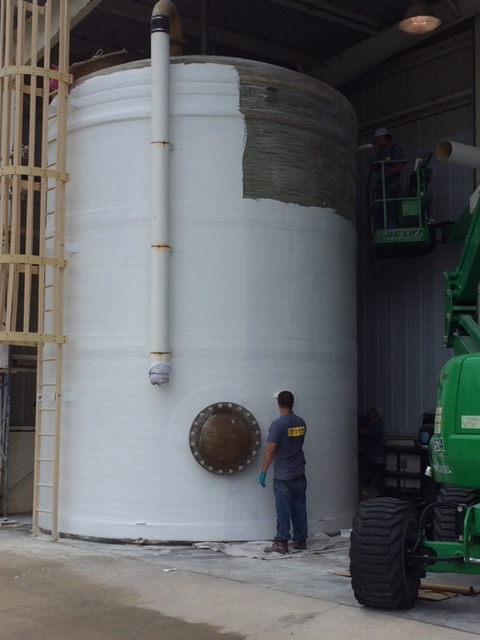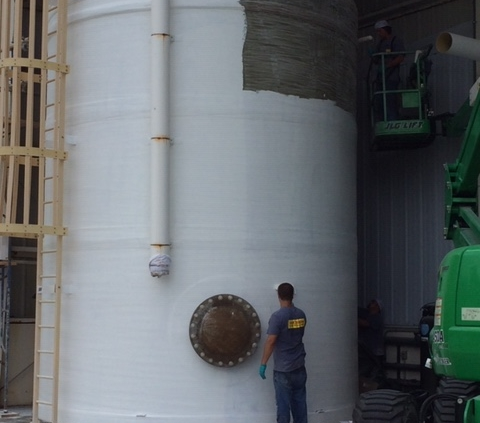What Does It Take to Repair FRP Pipes and Tanks?
Fiberglass tanks and pipes are relatively resistant to mechanical and thermal stresses. Nonetheless, they can be damaged and may sometimes even fail. The repair methods differ according to the part of the tank or pipe that is damaged.
For example, defective sealing gaskets around the joints of a fiberglass tank may be replaced; a faulty downpipe can be repaired with epoxy resin; damaged pipes in a potable water system line must be replaced.
Repairing fiberglass tanks and pipes is both time-consuming and costly. In this blog, we’ll learn how FRP tanks and pipes are repaired using epoxy resin.

How FRP Tanks and Pipes Are Repaired with Epoxy Resin?
Epoxy resin is a two-part system consisting of a resin and a hardener. It’s stable at normal temperatures but can be activated by adding an appropriate catalyst, usually contained in another container.

The plasticizer contained in the resin largely determines the softening temperature of the cured epoxy. The harder the plasticizer, the lower the softening temperature. This resin and hardener mixed at a temperature of 30 °C cures to the mechanically strong but relatively elastic material. Properly mixed epoxy resins and hardeners can withstand mechanical stresses while remaining significantly elastic if other factors such as stress, temperature, and other factors affect the stress characteristics.
Repairing damaged fiberglass pipes is like repairing tanks. The resin should be mixed at a temperature of 30 °C or less since temperatures above 75 °C reduce the curing capability of epoxy.
What Might Affect the Strength of Epoxy?
The primary characteristic that may affect the strength and elasticity of the epoxy is the presence of an additive called a catalyst. This substance, which is normally present in small quantities, facilitates crosslinking between the epoxy resin and the hardener.
It allows the resin to harden almost immediately, which is why it is sometimes called an instantaneous catalyst. The catalyst should be added to the epoxy resin first. When working with epoxy resins, it must be considered that these products contain other additives, including catalysts or inhibitors that may influence different aspects of their characteristics.
Therefore, it is very important to read the material properties carefully. Epoxy resins are not always available in the same qualities or with the same additives. Therefore, it is necessary to work with appropriate materials for the repair.
If you’re looking for professional and certified technicians to repair your FRP tanks and pipes, then look no further. Our experts at Hudson Fiberglass can help you. We offer FRP tank and Pipe Repair, certified FRP tank inspection, tank inspection services, field welding services, and much more.
Contact us to learn more about our services.



